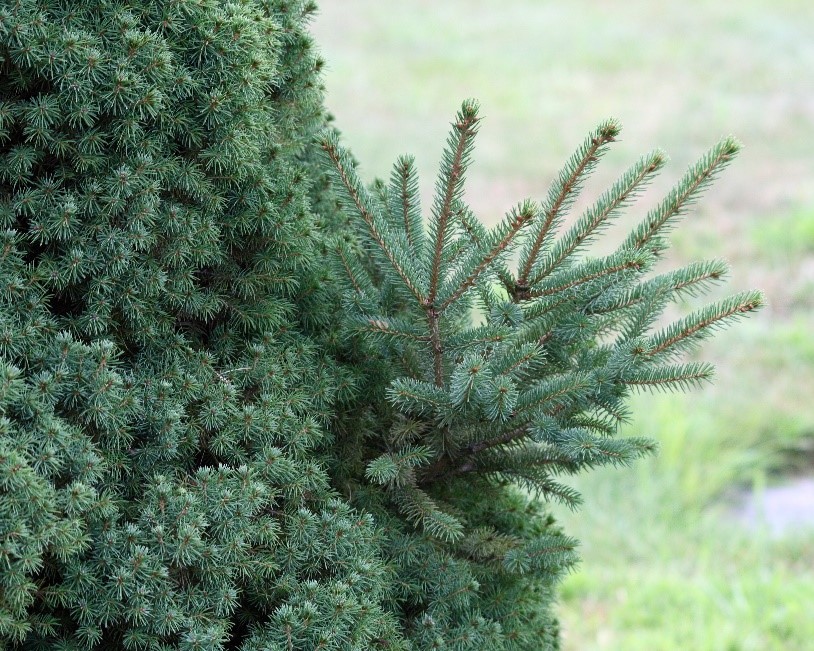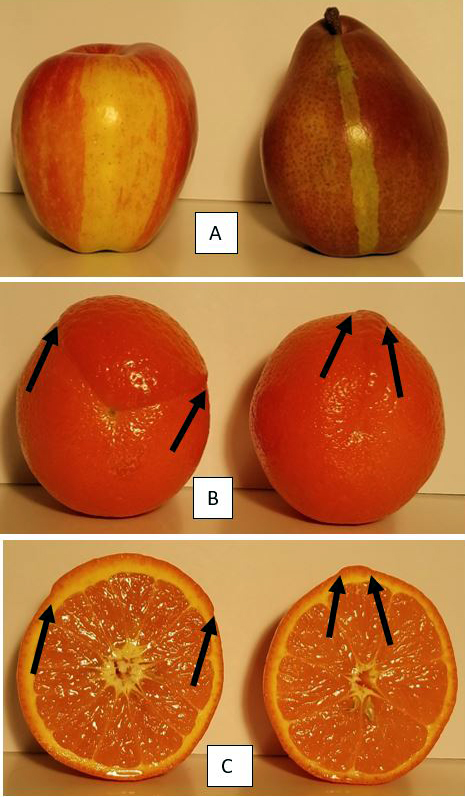Health and survival of an organism depends on reliable and accurate DNA (Deoxyribonucleic Acid) replication and orderly cell division. Without these processes being highly dependable, survival is questionable. However, occasional mistakes occur. What kind of mistakes happen, what causes them to happen and what are some of the outcomes?
First, it is important to know most DNA does nothing. DNA is classified as “coding” or “non-coding.” Coding DNA codes for the production of enzymes and proteins required to run the processes necessary for life. Non-coding DNA is similar to random letters placed together that do not make sense. The purpose of such an abundance of non-coding DNA is poorly understood, but of the 6.5 feet of DNA in each human cell, only about 1 inch is coding DNA. Mistakes within the non-coding sections have no apparent consequences and that is one theory as to why there is so much—it may act as a buffer to protect coding DNA. A previous Michigan State University Extensionarticle, “Mutants have value too,” mentioned some DNA changes are useful. This article will discuss how they occur and gives examples of commonly seen plant mutations.
Mutations are due to changes occurring within DNA itself or in the replication/cell division process. Changes within the DNA molecule are referred to as “point mutations” since they occur in a small portion of the DNA but may still have significant effect because they change the “meaning of the code.” Point mutations can be due to damage from cosmic rays, chemicals and viruses. They can also be due to stress from heat, cold, severe pruning or replication error causing a shift in DNA sequences so it no longer makes sense. Many biological systems are pathway-type systems requiring intermediate products to form before producing the final product. Enzymes control these intermediate steps, and interruption in any step prevents the end product from being produced. Therefore, the more steps in the pathway, the more vulnerable the system is to possible change.
 Dwarf spruce with a branch reverting to the original non-dwarf state. Photo by Ragesoss CC BY-SA 3.0.
Dwarf spruce with a branch reverting to the original non-dwarf state. Photo by Ragesoss CC BY-SA 3.0.
Point mutations affect many systems within plants. The most visually dramatic are color or shape. Photo 1 shows various naturally occurring color mutations. The change could affect a portion of a flower, fruit or leaf, or an entire branch. Depending on which tissue is involved, the change can be passed onto the next generation through seeds. They can also be propagated through grafting or cuttings. Some mutations can be unstable and result in producing sections of the plant that revert to their original state (Photo 2).
Plant point mutations are often found after stressful environmental conditions, especially cold. All cells in an organism contain the same genetic information no matter their location. Some cells form roots while others form flowers even though both contain the same genetic information. We do not fully understand what regulates this process. However, we do know that cells forced to reprogram to a different function appear prone to making mistakes in the process. This happens when plants experience bud-killing temperatures. When normal vegetative buds suffer damage, the plant forms adventitious buds that grow into new shoots. Most cells will reprogram successfully, but some may express change. Most changes go unnoticed and are not beneficial, but there could be a change in color or growth habit, which we easily spot and find attractive or beneficial.
A little explanation on plant anatomy and development may clarify mutation appearance. Plant structures begin with a single cell. That one cell divides to make two, those two divide to make four, then four divide to make eight and on and on until the structure is complete. That is why some visual mutations appear quite geometric. The hibiscus flower in Photo 1 is mostly half-white and half-pink, indicating the color change occurred at the two-cell stage. That is also what happens in a half red, half yellow apple fruit.
 Photo 3. Fruit mutations found in a supermarket produce section. Striping on Gala apple (A, left) and a red pear (A, right). Rind thickness change on orange (B and C). Arrows indicate the area of rind thickening on the oranges (B and C). Photos by Ron Goldy, MSU Extension
Photo 3. Fruit mutations found in a supermarket produce section. Striping on Gala apple (A, left) and a red pear (A, right). Rind thickness change on orange (B and C). Arrows indicate the area of rind thickening on the oranges (B and C). Photos by Ron Goldy, MSU Extension
To prepare for this article, I took a field trip to the local super market. As expected, I found mutations. They are easy to spot once you know what to look for. Photo 3 shows what I found. Based on the size of the change, the orange fruit on the left in Photo 3B and C apparently had a change occur at the four-cell and the one on the right at the 16-cell stage. These visual changes can be surprising when observed since they do not happen often, but not unusual once the process is understood.
Fruit color mutations are most obvious. Color development is a pathway process with several intermediate steps between initial and final product. Color changes, therefore, happen quite often, especially changing to less color. However, many red apples have improved color from the original because apple growers find single limbs with highly colored fruit. Buds from those limbs are then propagated into entire trees.
Another common type of mutation involves the adding or deleting chromosomes or adding an entire set of chromosomes. These result from mistakes during the cell division process. During normal cell division, chromosomes line up, duplicate and then are pulled apart and equally distributed into the two resulting cells. Sometimes chromosomes “lag” and get left behind, resulting in an unequal distribution—one cell has more and the other has fewer. These cells often do not do well since half of them are missing necessary information and unequal numbers lead to further replication difficulties.
However, occasionally chromosomes duplicate and a new cell does not form. This results in the original cell having an entire extra chromosome set. These changes are quite stable since they have the necessary information—just twice as much, and they have an equal number of chromosomes, making further cell division regular. The resulting cells of this change are said to be polyploid (poly = many; ploidy = chromosomes). This change can happen in all cells, but if it occurs in cells responsible for sexual reproduction, they form egg cells and pollen grains that have twice the normal number of chromosomes and the resulting eggs and pollen are referred to as “unreduced gametes.”
If an unreduced pollen grain combines with an unreduced egg cell from the same species, it has the potential of developing into an entire new plant species. This process has given rise to some well-known food plants. Blueberries and strawberries are part of a polyploid series with some being diploids (the normal situation of two sets of chromosomes), tetraploids (four sets), hexaploids (six sets) and octoploids (eight sets). Commercial strawberries are octoploids and commercial blueberries are either tetraploids or hexaploids. The tetra-, hexa- and octoploids all are thought to trace their origin back to a diploid ancestor that went through the unreduced gamete production steps and combinations. Other polyploid plants include wheat (tetraploid or hexaploid), oats (hexaploid), kiwifruit (hexaploid) and others. In fact, 30 to 80 percent of all plants are polyploids.
You will note all levels mentioned are even numbers—two, four, six, eight etc. None were odd—one, three, five, etc. That is because odd numbers return us back to the problem of unequal chromosome distribution during cell division. However, for every rule there is an exception, and the potato has members with two, three, four and five sets of chromosomes, but then potato does not rely solely on sexual reproduction but can be propagated through asexual seed pieces. The odd sets do exist or can be made in other plant species, and we have taken advantage of them as food crops since in many cases the unequal chromosome distribution leads to seedlessness such as seedless watermelon and bananas. The plants will grow, but they will not produce offspring, they are sterile and only have traces of seeds.
Mutations also occur within animal systems. However, since animal systems are more complex, their survival is not as dependable and changes not as dramatic. There are some polyploid fish and amphibians, but polyploid mammals are rare and it is even rarer for them to survive until birth.